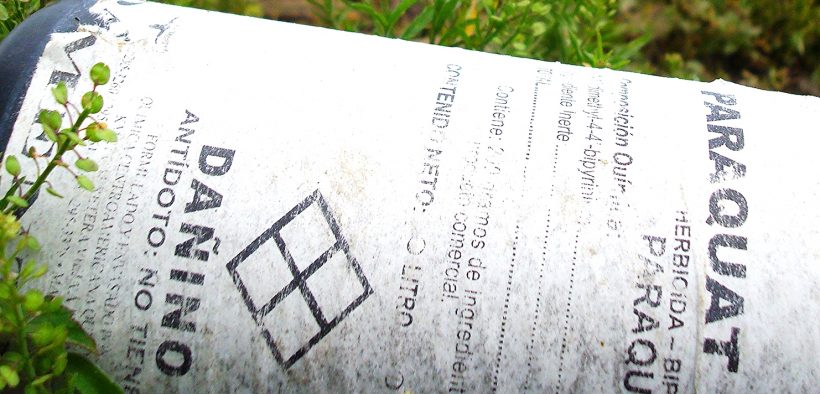Despite Damning Scientific Evidence, EPA Dismisses Link Between Parkinson’s and Exposure to the Herbicide Paraquat

While paraquat has been banned in the European Union since 2007, millions of pounds are still being imported into the U.S. from other countries.
(Beyond Pesticides) The U.S. Environmental Protection Agency (EPA) is downplaying the connection between exposure to the herbicide paraquat and the development of Parkinson’s disease, per registration review documents released by the agency this week. Although unsurprising given the current administration’s track record of defending some of the most heinous chemicals still on the market, the review nonetheless marks a low point for scientific integrity within EPA’s Office of Pesticide Programs, according to advocates. Health and environmental advocates have already discounted EPA’s industry-biased review, and are instead pushing hard for Congressional action – namely HR 3817, the Protect Against Paraquat Act, introduced by Congresswoman Nydia Velazquez (D-NY).
Under federal law, pesticides are required to undergo reevaluation every 15 years. Paraquat is a potent restricted use herbicide, not available to be applied by residential users, but permitted for use on multiple agriculture crops. Over the last decade, independent peer-reviewed scientific studies have repeatedly found strong associations between paraquat to the development of Parkinson’s disease. Many of these studies have been covered in Beyond Pesticides’ Daily News or are recorded in the Pesticide-Induced Diseases Database.
In response to this growing body of literature, EPA conducted an epidemiological evaluation of published studies on the link between paraquat and Parkinson’s. But, in a similar manner to how the agency conducted its epidemiological evaluation of pyrethroids, EPA made broad statements dismissing scientific evidence as insufficient.
While the chemical has been banned in the European Union since 2007, as a 2016 New York Times exposé found, millions of pounds are still being imported into the U.S. from other countries, sprayed on nearly 15 million acres of U.S. cropland. The Chinese government began a phase-out of the chemical in 2013, and Brazil is set to eliminate this chemical.
“America stands alone in functioning as a dumping ground for paraquat, a toxic herbicide other countries may produce, but refuse to expose their residents to,” said Drew Toher, community resource and policy director for Beyond Pesticides.
On the link between paraquat and Parkinson’s, “The data is overwhelming” said Samuel M. Goldman, MD, an epidemiologist in the San Francisco Veterans Affairs health system to the New York Times. “I’m not a farmer, I don’t need to kill weeds, but I have to believe there are less dangerous options out there.”
An EPA environmental review conducted as part of the reregistration process found evidence of significant reproductive harm to small mammals, and determined that songbirds may be exposed to levels well beyond lethal concentrations known to cause death. Threats to mammals and songbirds are particularly concerning in light of significant declines in these animal groups.
As EPA continues to damage public trust in its scientific review process, it is up to everyday citizens and residents of the US to correct course and push for health protective laws. Beyond Pesticides and other organizations stand ready to assist farming communities in transforming pest management by eliminating a reliance on toxic pesticides like paraquat and adopting organic practices.
Act to get paraquat out of America’s food system by encouraging your Congressional representative to cosponsor the Protect Against Paraquat Act. The legislation is supported by the Unified Parkinson’s Advocacy Council – a group led by The Michael J. Fox Foundation for Parkinson’s Research – and supported by other health and environmental groups.
All unattributed positions and opinions in this piece are those of Beyond Pesticides.















